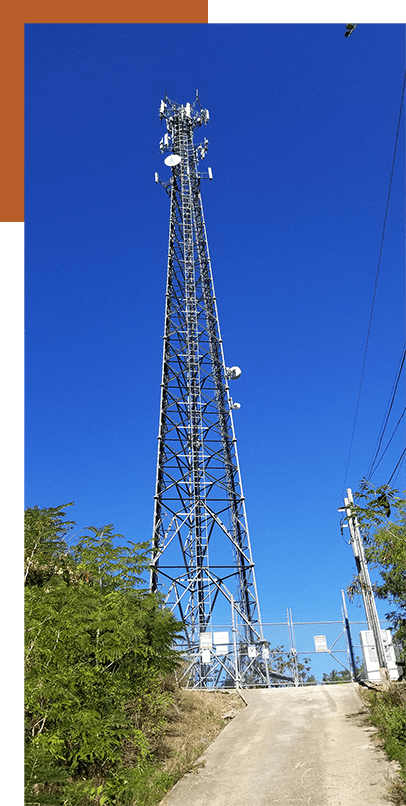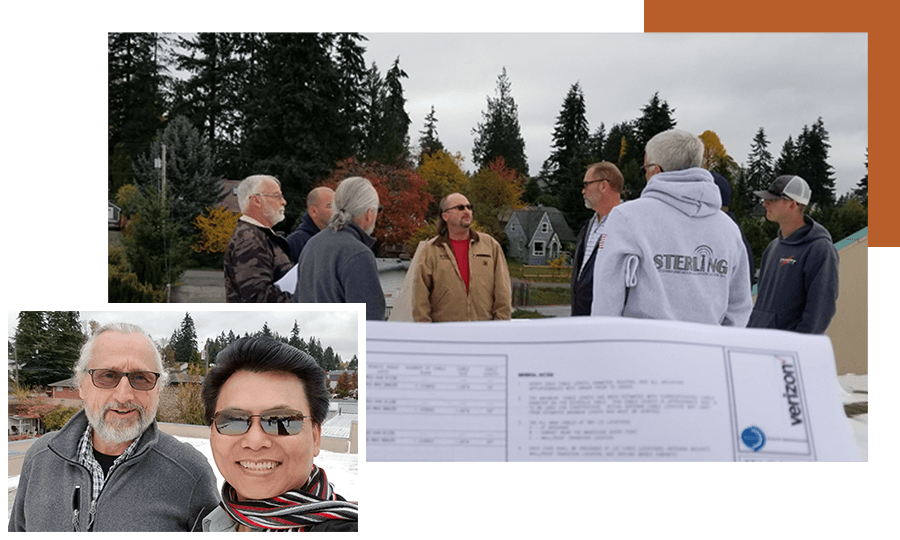Wireless Insiders Now On Your Side
How Tall Are Cell Towers?
Articles > How Tall Are Cell Towers?
How Tall is a Cell Phone Tower?
Cell towers vary in heights. Here’s an explanation why this is.
Cell tower heights are driven by engineering requirements, zoning restrictions, and Federal Aviation Administration (FAA) regulations. In rural areas where each cell tower is expected to provide the greatest reach possible to maximize the investment in the tower build, zoning restrictions tend to be the defining theme that restricts height designs. FAA regulations require that towers greater than 200-feet are to be lighted with a flashing tower top beacon for aviation safety. In fact, new regulations require tower lighting in some situations even with towers less than 200 feet tall. Lighting towers are expensive to maintain because there is a legal liability and regulatory requirement that burnt light bulbs are to be replaced immediately. There is tremendous liability to the tower owner if an aircraft flies into a tower because the defective light bulb was not replaced. Light bulb management alone can be an expensive obligation that many tower operators choose not to incur.


How Tall Do Cell Towers Need to be in Order to Be Effective?
For this reason, if zoning allows a tower to be just above 200 feet tall, tower developers would rather just build a 199-foot cell tower to avoid the maintenance cost. If a tall tower is to be built at all, developers would rather build 300-foot cell towers because they are more valuable to wireless carriers because of the added reach of the cell signal, thus the increased value would outweigh the lighting maintenance burden.
In metropolitan areas, aside from zoning height restrictions, RF engineers limit antenna heights due to spectral efficiency concerns. Wireless carriers must pay the Federal Communications Commission (FCC) the right to operate in certain frequency (spectrum) bands. In major metropolitan areas, AT&T, Verizon, and T-Mobile must outbid each other in spectrum auctions by paying the FCC tens of billions of dollars for the spectral right to operate in any major cities. With spectrum in limited supply and outrageously expensive, wireless carriers must use each frequency very efficiently. One way to do this is keep the cell towers as low as possible so the frequencies do not travel very far. By limiting the reach of each tower antenna, that same frequency can be reused again and again in the same city. The downfall of this design principle is that many shorter towers will need to be built in order to improve the spectral efficiencies defined by radio frequency (RF) engineers. In these situations, it is ironic that building shorter cell towers is cheaper than paying billions of dollars for more spectrum. Often, in a rooftop tower build in downtown situations, the tallest building is not the right building for antenna placements. One way we remedy this situation is to install the antennas on the exterior of the building, lower than the roof height in order to meet the spectral engineering requirements.
Average Cell Phone Tower Height
The equation is more complicated when we apply another layer of restriction defined by zoning codes. In metropolitan areas, jurisdictions tend to limit tower height to be consistent with the overall allowed height plans for the area. Building a 200-foot cell tower is neither desired by the RF engineers, or allowed by FAA rules due to nearby airports, and zoning is not likely to allow such heights in any downtown areas. In desperate situations where zoning restrictions make it impossible to build tall structures in residential areas, Terabonne is successful in convincing wireless carriers to accept our client’s rooftop designs on one-story buildings. While this represents the lower end of the tower height, the average tower heights in core metropolitan areas tend to be between 50’ to 80’ tall. Perimeter areas and connecting highways to major metropolitans can range from 80’ to 150’. In rural areas, tower heights for highway coverage can range from 150’ to 300’ tall.


Terabonne disassociates tower height to wireless rental income for our clients. There is non-correlation between tower height and rent received by our clients. The reason is that there are too many factors that determine the value of a location. While the above-mentioned factors drive decisions on tower heights of choice, supply and demand, competition, and engineered cellular traffic through any one location also play important roles in proper rental valuation for our client properties. Every site is unique. We do not participate in making false claims of “three hundred percent increase in rent” because these are just internet claims designed to draw phone calls from unsuspecting landlords. At Terabonne, we let the engineering and data drive true pricing for our client’s properties. This methodical process of using empirical data to determine rental values for our clients has served our clients 100% of the time. Property owners should be discerning when reading outlandish internet claims from “wireless experts” when they have zero understanding of the technical side of the wireless industry.
If you are looking for a cell tower consultant who designed cell towers for a living, worked for wireless carriers as their RF engineering and tower design consultants, supported by a team of seasoned wireless legal staff to negotiate your cell tower lease through construction completion with expertise and integrity, then please reach out to us anytime.

Need Advice?
Let’s discuss your cell tower opportunity. We will share with you what we know about your cell tower ground lease. Never a fee until we agree to work together and we deliver all-inclusive results to your satisfaction. Unheard of assurance and confidence. Please email, call or send us a message anytime.
Get In Touch
P.O. Box 6257
Edmonds, WA 98026
